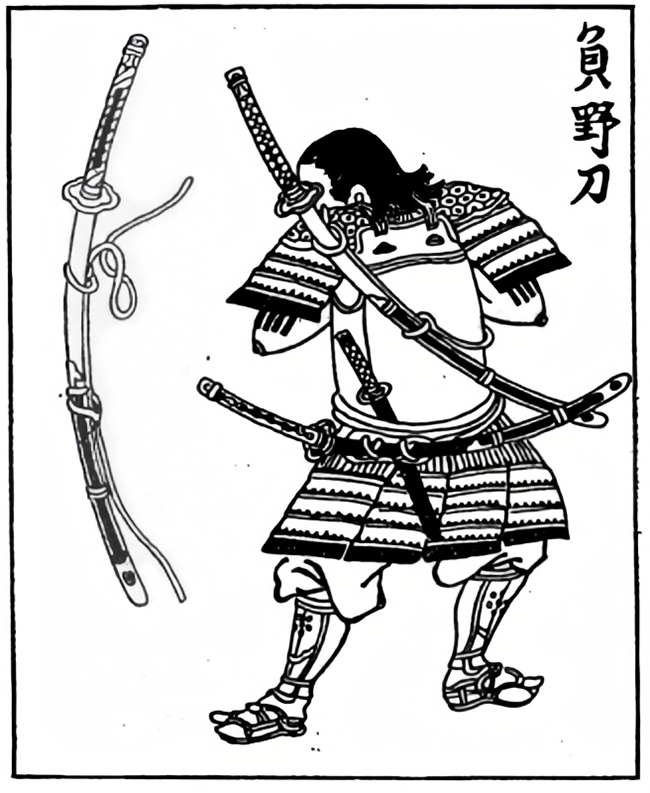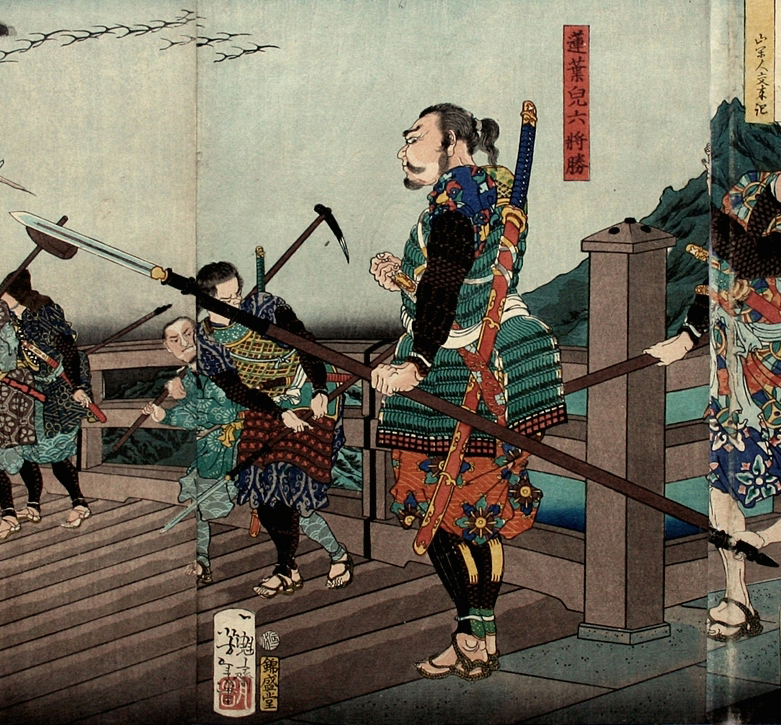Wow, hornets nest stirred and all that!
Oda is right about the nodachi usually being carried by a retainer, but carrying the sword on the back was was known in the Nambokucho period, 1333-1391.
Let me quote Kanzan Sato's book "The Japanese Sword";
"The swords of the Nanbokucho period represent the culmination of the tendency towards greater length which began to manifest itself at the end of the Kamakura period. Naturally there are still tachi of normal size but, generally speaking a length of from 90 to 100cm became the norm". ...... "Some of the so called otachi (great tachi) were as much as 1.3 or 1.5 metres long; they are also known as seoidachi (back-carried tachi) because they were borne into battle carried over the shoulders (my emphasis), rather than slung at the waist. It is recorded that when in actual use they were wrapped in cord down to the middle of the sharpened part but it is not clear what practical purpose was served by this measure".
These larger swords were used, similarly to the western broadsword, for cutting horses legs to bring down the rider, or to clear large groups of enemy samurai or ashigaru.
Although the use of these weapons had died out by the 16th century (which the model seems to represent) A samurai of that period, commonly trained in the use of all the martial arts, would however presumably still have been aware of the history of these weapons and could have owned them if passed down by the family. I don't think it is beyond possibility that some were used. (Rather fancifully, a massive sword is shown being used in the Sengoku period wielded by three samurai in the the film samurai Banners!).
Besides Oda's issue with the lacing, I see no fundamental problem with this figure, although I agree it does not really appeal to me as a figure. What I have bigger issues with is the use of the Jinbaori in this situation. The Jinbaori (or camp-coat) was only intended to be used in the commanders camp area, as identification among a number of high ranking samurai wearing full armour ( a safer and more comfortable version of the banner worn on the back during battle). Unless the camp was breached (which rarely actually happened historically), the Jinbaori would be removed when fighting. Model manufacturers however seem to use this garment at every given opportunity.
But then again, due to the complexity of armours and lack of any uniform regulations in old Japan, my maxim when dealing with samurai is "never say never" (unless travelling back in time has been indicated). It's rarely a case of "that never happened" more like "that seems unlikely".












